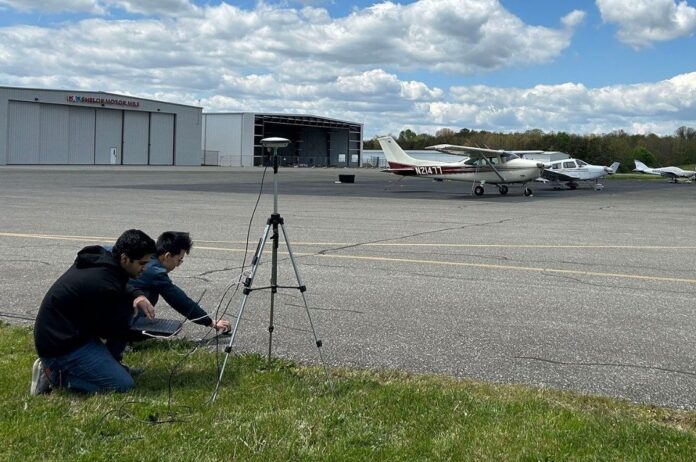It may be years before we see large passenger or cargo aircraft in operation without a human pilot. In order to safely and successfully integrate large un-crewed aircraft into civil airspace, there are still a number of technical gaps needing to be filled.
To address the technical navigation challenges associated with large un-crewed aircraft systems (UAS) automatic surface operations, including automatic takeoff, landing, and taxiing, NASA has awarded $6 million to a multi-university partnership as part of the agency’s University Leadership Initiative.
University and industry partners include
- Ohio University, leading the three-year project
- Virginia Tech
- Illinois Institute of Technology
- Stanford University
- Tufts University
- Reliable Robotics Corporation
- Veth Research Associates
- The Boeing Company
The university and industry partnership brings together world renowned experts in global navigation satellite systems, alternative positioning, navigation and timing, sensor integration, safety monitoring, machine learning, and air transportation.
The project aims to advance industry standards around automatic taxi systems, such as those actively being developed by RTCA, a nonprofit standards development organization that drives industry consensus for standards. These standards are used as a means of compliance with regulatory bodies such as the Federal Aviation Administration, responsible for ensuring safe operations for both civilian and military aircraft.
Flight delays: What’s the hold up?
Compared to autonomous airborne navigation, at altitudes where the aircraft has a clear, unobstructed line of sight to global navigation satellites above, navigating around the airport presents more of a challenge. Taxiways and runways are narrow, requiring a significantly higher positioning accuracy. At a busy airport with structures and other aircraft continuously taking off and landing, the line of sight to satellites can be obstructed at unpredictable times.
When satellite signals are blocked, bounced, and redirected, they arrive at the receiver from different directions and paths. Known as multi-path, the navigation satellite measurement errors have a direct effect on positioning accuracy when precision is needed most.
“Solving the problem of multi-path is a big issue,” said Mathieu Joerger, an assistant professor in the Kevin T. Crofton Department of Aerospace and Ocean Engineering and one of the primary investigators from Virginia Tech. “When there is a need for precise, high integrity GPS, and you are operating in an environment with intermittent obstructions to the sky, the toughest part is dealing with the unpredictability of multi-path.”
Advancing technology and setting standards
Throughout the three-year effort, the project will cover requirement development, technology maturation, and flight testing with the goal of achieving Technology Readiness Level 6. Verification and validation in simulated and real environments will be completed at Ohio University’s Flight Testing Center, while the industry partners will provide valuable input and guidance to address very specific technical challenges critical to autonomous flight.
At Virginia Tech, the focus will be developing computer vision augmentation as well as ground-based navigation systems to increase accuracy, integrity, and continuity beyond satellite navigation alone. The team of experts includes
- Joerger who holds expertise in multi-constellation global navigation satellite systems (GNSS) and GNSS augmentation, as well as autonomous multi-sensor system safety quantification for ground and air vehicles.
- Abhijit Sarkar, senior research associate at the Virginia Tech Transportation Institute (VTTI), who specializes in computer vision and machine learning, and is conducting exploratory research on integrity for computer vision-based UAS navigation
Graduate and undergraduate students will be involved in all stages of the research and have the opportunity to gain industry experience, working closely with Reliable Robotics.

“This project is a great initiative to bring industry and academia together to advance aviation research. At VTTI, we will specifically focus on multimodal sensor technologies that will help in developing automatic taxi systems for UAS,” said Sarkar. “Augmentation of vision-based sensors with navigation systems is an exciting area of research and we believe that this project can significantly advance research in autonomous navigation, safety, and reliability of autonomous systems.”
While the primary focus of this work is to support large, uncrewed, fixed-wing aircraft surface operations, the technology derived from this research can be directly applied to traditionally piloted aircraft, especially for single pilot operations where it is beneficial to distribute the workload of taxiing between the onboard pilot and automation. Additionally, these new navigation safety methods may be applicable to other modes of transportation such as automated ground vehicles.
“If we can solve this in a structured environment such as an airport, we may then find ways to extend the technology into less structured, urban environments,” said Joerger. “The goal is to develop safe, scalable systems that are certifiable and relatively easy to implement in industry.”
– By Jama Green

